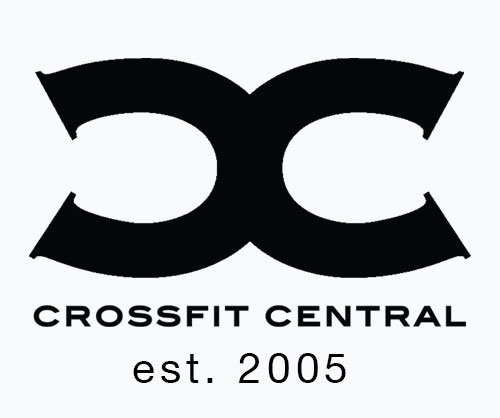What HRV Data Can Tell You About Your Health
by Lauryn Lax
Have you ever wondered why some days you feel fitter, stronger, faster or healthier overall? “HRV” (Heart Rate Variability) could be your answer.
HRV 101
Heart Rate Variability is a health assessment metric that tells you how stressed your body is or not.
Stress affects EVERYTHING in our health.
For example: go to bed at midnight and wakeup at 5 to workout under slept? Stress. Drank one too many glasses of wine and feel a little sluggish the next day? Stress. Regularly eat foods, like gluten or dairy, that you are intolerant to? Stress.
Although stress is inevitable in life (EVERYONE experiences it), the toll stress takes on your body is all about the compound effect: the more stressed out you are, the less healthy you feel.
Enter: plateaus in your squat, clean and deadlift, stubborn body fat that won’t go away or the inability to gain muscle.
Heart rate variability is a “stress check-in” measurement you can take every day to help you keep your body in the green—less stressed—so you can feel better overall.
Basically, HRV shows how “stressed” or “relaxed” and strong your body’s autonomic nervous system is.
How to Track Your HRV
Heart rate variability is exactly what it sounds like: the variability (variety) in intervals between heart beats, or basically the amount of time between heart beats.
Ideally, we want a Higher HRV (more variability or longer time between heart beats). The higher our HRV, the more likely our cortisol levels (stress hormones) are “healthy.”
Low HRV means you are in “fight or flight” mode.
Thanks to technology, you can track your HRV at home with a heart rate monitor or device, and daily log.
Step 1. Get a Heart Rate Monitor or Tracker
Recommended HRV Trackers
WHOOP
Body Battery (Garmin)
Oura Ring
Heart Rate Monitor + App (ithlete, BioForce HRV, and Elite HRV work)
Step 2: Track Daily Upon Waking for 7 Days to Find Your Baseline
No matter the app, the basic premise is the same: Measure HRV once per day, ideally upon waking.
Step 3: Review Results + Establish Your Baseline
Over time, as data accumulates in the app’s log, you’ll identify your baseline. Your daily score isn’t terribly important; you’ll be more interested in seeing how your day-to-day HRV compares with this baseline.
What’s a “Bad” or “Good” HRV?
There aren’t normative values of a ‘good’ and ‘bad’ HRV, instead use HRV as an individualized biofeedback tool (everyone’s HRV is unique to them). If your score is within your baseline range or higher, it may be a good day to stick to your workout, or even push yourself a bit. If it falls below baseline, it may be a better idea to scale back your training plans or take a rest day.
How Do I Improve My HRV?
Your sleep quality, fitness recovery and nutrition are a few (of many) lifestyle factors that affect your HRV.
Once you have a solid HRV baseline, you can then take “inventory” of these things to see how they affect your numbers.
Common Triggers for a Low HRV (more stress)
Eating close to bedtime
Broken sleep (waking up several times per night)
Under-recovering from your workouts (not eating enough, not sleeping enough)
Overtraining
Using blue light and overhead artificial lights at nighttime
Poor breathing patterns (not deep breathing)
Drinking alcohol
High caffeine/coffee consumption
Eating foods you are intolerant to
Digestive distress and poor gut health
…Just to name a few.
Every day stressors are inevitable. (Life happens). However, the more you get to know your personal HRV, the more you can link your personal daily lifestyle stressors to your numbers, and work more directly on improving and biohacking the things in your life holding you back from feeling optimal.
How CrossFit Central Can Help You Improve Your HRV
We, here at CrossFit Central, consider ourselves your personal partners for health optimization—fitness, nutrition, sleep quality, mobility, work-life balance, the list goes on.
In fact, we consider your total health optimization so essential, that we’ve recently partnered with WHOOP, a great way to track your HRV, for all our athletes to use so you can get the MOST out of your workouts (both inside and outside the gym).
The WHOOP band seamlessly fits on your wrist, tracking your HRV throughout the day (and doesn’t get in the way of cleans, front squats, pull-ups or any other important work you need to do).
This month, we’re encouraging members like you to pay attention to the “little things” (sleep, nutrition, alcohol, blue light, overtraining, etc.) that add up to make a big difference.
You can join our WHOOP team here, get a free band and your first month free!
Read More About HRV
https://www.whoop.com/thelocker/heart-rate-variability-hrv/
https://www.health.harvard.edu/blog/heart-rate-variability-new-way-track-well-2017112212789
https://www.ncbi.nlm.nih.gov/pmc/articles/PMC5900369/

